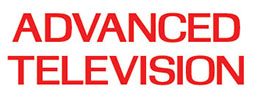
Published here 7/24/2016
In the last year there has been a clear shift in the UK’s radio listening habits with digital listening’s share of total radio listening growing by 10 per cent to 41.7 per cent (from 37.9 per cent) while during the same period the AM/FM listening share has declined by almost 10 per cent to 50.6 per cent (from 56.4 per cent).
Over 30 million people or 56 per cent of adults listen on a digital platform every week, an increase of 2.2 million digital listeners in the last year. Annual digital listening hours have grown by 9.8 per cent (to 423 million hours from 385 million in Q4 2014).
Digital listening has remained broadly flat quarter on quarter (Q4 2015 v Q3 2015) which suggests a modest quarterly correction after the exceptional rate of growth last quarter.
Listening on all digital platforms grew year on year with a 9 per cent increase in DAB listening (to 280 million hours from 257 million hours.
DAB listening share increased to a record level of 27.7 per cent and remains the most popular digital platform representing over 66 per cent of digital listening. DAB owner-ship grew by 10 per cent year on year to 54 per cent of the population (from 48.9 per cent.
There was 10 per cent increase in online listening (to 69 million hours from 62 million hours in Q4 2014) and online listening share increased to 6.8 per cent. Listening on digital TV grew by 6 per cent (to 50 million hours from 48 million hours and digital TV listening share remained flat at 5.0 per cent.
Radio listening in cars grew to a record level of almost 23 per cent (22.8 per cent) of all radio listening. Digital listening in cars grew by 45 per cent year on year (to 45 million hours from 31 million in Q4 2014) and now accounts for nearly 20 per cent of all in car listening (19.5 per cent from 13.9 per cent in Q4 2014), boosted by growth in new cars being fitted with digital radio as standard.
Over 50 per cent (50.7 per cent) of total listening hours to National BBC and commercial stations are now digital and there was strong growth in both BBC and commercial digital listening with their digital platform shares increasing to 42.5 per cent and 40.6 per cent respectively (from 38.3 per cent and 37.2 per cent in Q4 2014).
In the battle for the No.1 digital-only station, BBC 6 Music reclaimed the top spot overtaking sister station Radio 4 Extra. BBC 6 Music increased listeners by 6 per cent to 2.2m listeners (from 2.08 million in Q4 2014) while BBC Radio 4 Extra increased by 23 per cent to 2.1 million listeners (from 1.7 million listeners in Q4 2014).
There was strong growth for commercial digital stations with Absolute 80s retaining its position as the No 1 commercial digital-only station growing by 12 per cent to 1.59m listeners (from 1.4 million in Q4 2014). Kisstory grew year on year by 34 per cent to 1.4m listeners (from 1.0m in Q4 2014) ahead of its national expansion on the second national commercial digital radio multiplex in March 2016.
In its first Rajar period Global station Radio X recorded 1.2 million listeners an increase of 30 per cent over XFM listeners in Q4 2014. Digital listening to Radio X increased by 55 per cent versus XFM digital listening in Q4 2014 boosted by Radio X going onto the D1 DAB Network in September 2015.
Five major radio brands in dual transmission now have digital listening accounting for the majority of listening: Absolute Radio Network – 78 per cent, Magic – 56 per cent, Kiss – 55 per cent, Gold – 54 per cent, BBC Radio 5 live (incl. Sports Extra) – 56 per cent, In Q4 2015 LBC digital listening increased by 17 per cent to nearly 50 per cent (49.8 per cent) from 44 per cent last year.
Ford Ennals, CEO of Digital Radio UK, said: “Digital listening continues to grow by 10 per cent per annum and is closing the gap on analogue listening. Digital listening to national stations is already over 50 per cent and we expect to see that accelerate with the biggest ever launch of national commercial stations this Spring. This is a massive moment for radio and listeners, and with this explosion of choice there has never been a better time to listen to digital radio at home or in the car.”









 Citing concerns that online ad fraud will result in higher prices for consumers, two lawmakers are asking the Federal Trade Commission what steps it's taking to address fake traffic on the Web.
Citing concerns that online ad fraud will result in higher prices for consumers, two lawmakers are asking the Federal Trade Commission what steps it's taking to address fake traffic on the Web.